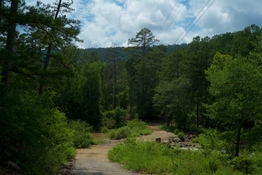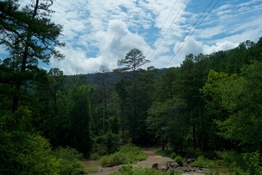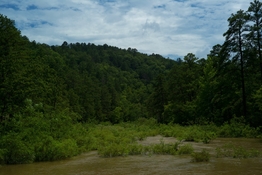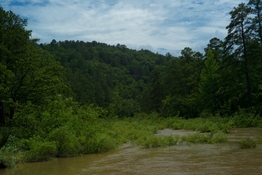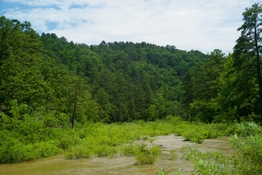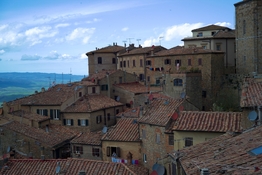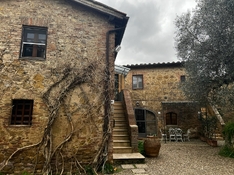-
Welcome to Photrio!Registration is fast and free. Join today to unlock search, see fewer ads, and access all forum features.Click here to sign up
- Home
- Forums
- Digital Workflow Forums (100% Digital)
- Digital Tools, Materials and Software
- Digital Image Editing
You are using an out of date browser. It may not display this or other websites correctly.
You should upgrade or use an alternative browser.
You should upgrade or use an alternative browser.
ETTR (Expose To The Right)
-
D
- Thread starter Nikon 2
- Start date
Recent Classifieds
-
For Sale Nikon 85mm 1.4 AIS
- Started by Gram Nylén
-
Want to Buy Fuji GW690II
- Started by Pasto
-
For Sale FS: Cambo Ground Glass Protector
- Started by B.S.Kumar
-
For Sale Printalyzer Visible Light Transmission/Reflection Densitometer NIB
- Started by Steve Goldstein
-
Sold Schneider 90mm f8 Super Angulon Copal 0 shutter Ex cond. $235.00 shipped conus
- Started by gphoto120
Forum statistics
Is there a question?
I assume this is about ETTR in the sense of Expose To The Right. If so, then we will never be able to draw any conclusions form these small jpegs. The whole concept of ETTR revolves around optimizing signal-to-noise ratio, which means you'll have to compare the noise in these samples to be able to determine whether there's a difference to them. One way you could do that is to load both images in your raw converter, take a shadow area (e.g. some tree foliage) and boost its contrast. It's essential in doing the comparison that the effective exposure as seen on-screen is the same for both images (so you'll have to dial in a negative exposure compensation on the ETTR frame), and that the contrast boost you apply to make the noise visible is the same. At this point you could even do quantitative analysis on the noise, but I assume that a qualitative assessment (a.k.a. eyeballing) will be sufficient for your purposes.
Btw, there are distinct differences in white balance between the images you posted in #1; that's not a good basis for comparison. Also, the photos in #1 and #2 are pretty dark; I assume you've run these through a RAW converter to adjust the exposure - if so, your monitor may be set too bright or your viewing conditions were very dark, resulting in a bias towards underexposure in the final/processed images. That's just a side note, but if you're in the process of splitting hairs w.r.t. image noise, then maybe the first place to start is to get the basics right. Learn to walk before you try to run, and all that.
Finally, to cut a long story short, in practice there's very little benefit to ETTR for general photography using a reasonably modern camera. You can save yourself a lot of time by just exposing for the highlights on a digital camera and call it good. In practice, that boils down to exposing to the right as much as you can afford anyway. Then in your RAW converter, adjust exposure and contrast to suit your vision for the image.
Btw, there are distinct differences in white balance between the images you posted in #1; that's not a good basis for comparison. Also, the photos in #1 and #2 are pretty dark; I assume you've run these through a RAW converter to adjust the exposure - if so, your monitor may be set too bright or your viewing conditions were very dark, resulting in a bias towards underexposure in the final/processed images. That's just a side note, but if you're in the process of splitting hairs w.r.t. image noise, then maybe the first place to start is to get the basics right. Learn to walk before you try to run, and all that.
Finally, to cut a long story short, in practice there's very little benefit to ETTR for general photography using a reasonably modern camera. You can save yourself a lot of time by just exposing for the highlights on a digital camera and call it good. In practice, that boils down to exposing to the right as much as you can afford anyway. Then in your RAW converter, adjust exposure and contrast to suit your vision for the image.
I assume this is about ETTR in the sense of Expose To The Right. If so, then we will never be able to draw any conclusions form these small jpegs. The whole concept of ETTR revolves around optimizing signal-to-noise ratio, which means you'll have to compare the noise in these samples to be able to determine whether there's a difference to them. One way you could do that is to load both images in your raw converter, take a shadow area (e.g. some tree foliage) and boost its contrast. It's essential in doing the comparison that the effective exposure as seen on-screen is the same for both images (so you'll have to dial in a negative exposure compensation on the ETTR frame), and that the contrast boost you apply to make the noise visible is the same. At this point you could even do quantitative analysis on the noise, but I assume that a qualitative assessment (a.k.a. eyeballing) will be sufficient for your purposes.
Btw, there are distinct differences in white balance between the images you posted in #1; that's not a good basis for comparison. Also, the photos in #1 and #2 are pretty dark; I assume you've run these through a RAW converter to adjust the exposure - if so, your monitor may be set too bright or your viewing conditions were very dark, resulting in a bias towards underexposure in the final/processed images. That's just a side note, but if you're in the process of splitting hairs w.r.t. image noise, then maybe the first place to start is to get the basics right. Learn to walk before you try to run, and all that.
Finally, to cut a long story short, in practice there's very little benefit to ETTR for general photography using a reasonably modern camera. You can save yourself a lot of time by just exposing for the highlights on a digital camera and call it good. In practice, that boils down to exposing to the right as much as you can afford anyway. Then in your RAW converter, adjust exposure and contrast to suit your vision for the image.
Thank you for that explanation.
You’re right by describing those JEPGs as useless for any conclusions. The RAW DNG files show much more information.
My obsolete MAC desktop is unable to download anything that incorporates a RAW converter, which I prefer!
I’m trying to make photography as simple as I can since I’m not a rocket scientist…

Last edited:
Andreas Thaler
Subscriber
First image 2 ev
Second 0 ev…
Thanks for presenting!
ETTR is based on the fact that a digital camera stores more information in the bright areas than in the dark areas.
Therefore, it makes sense to adjust the exposure to the key highlights in the image. This can help to better differentiate the shadows and give you more flexibility when editing the image.
You can also use the zone system as a guide and place the key highlights, i.e. the bright areas of the subject that should still appear fully defined, in Zone VII.
You meter this area using spot meter mode, thus obtaining the exposure values for Zone V (middle) gray and correcting them with +2 EV (e.g. using the camera's override).
This makes optimal use of the camera's dynamic range, although this obviously doesn't help to prevent excessive contrast.
See
The Practical Zone System for Film and Digital Photography: Classic Tool, Universal Applications (English Edition) eBook : Johnson, Chris: Amazon.de: Kindle-Shop
The Practical Zone System for Film and Digital Photography: Classic Tool, Universal Applications (English Edition) eBook : Johnson, Chris: Amazon.de: Kindle-Shop
www.amazon.de
Thanks for presenting!
ETTR is based on the fact that a digital camera stores more information in the bright areas than in the dark areas.
Therefore, it makes sense to adjust the exposure to the key highlights in the image. This can help to better differentiate the shadows and give you more flexibility when editing the image.
You can also use the zone system as a guide and place the key highlights, i.e. the bright areas of the subject that should still appear fully defined, in Zone VII.
You meter this area using spot meter mode, thus obtaining the exposure values for Zone V (middle) gray and correcting them with +2 EV (e.g. using the camera's override).
This makes optimal use of the camera's dynamic range, although this obviously doesn't help to prevent excessive contrast.
See
The Practical Zone System for Film and Digital Photography: Classic Tool, Universal Applications (English Edition) eBook : Johnson, Chris: Amazon.de: Kindle-Shop
The Practical Zone System for Film and Digital Photography: Classic Tool, Universal Applications (English Edition) eBook : Johnson, Chris: Amazon.de: Kindle-Shopwww.amazon.de
 …
…
This formulation inherently confuses zone system speak, where the zones refer to relative brackets of density in the final image (print, slide or digital) with in-camera exposure compensation. IDK how it's formulated exactly in the book you quoted; if the author did it the same way, I can see how this will send people off into the woods and coming out with blown highlights or underexposed images. It's beyond me how digital exposure would somehow benefit from befuddlement with zone-speak.You can also use the zone system as a guide and place the key highlights, i.e. the bright areas of the subject that should still appear fully defined, in Zone VII.
You meter this area using spot meter mode, thus obtaining the exposure values for Zone V (middle) gray and correcting them with +2 EV (e.g. using the camera's override).
Andreas Thaler
Subscriber
This formulation inherently confuses zone system speak, where the zones refer to relative brackets of density in the final image (print, slide or digital) with in-camera exposure compensation. IDK how it's formulated exactly in the book you quoted; if the author did it the same way, I can see how this will send people off into the woods and coming out with blown highlights or underexposed images. It's beyond me how digital exposure would somehow benefit from befuddlement with zone-speak.
The author is qualified and has excellent feedback; I have no reason to doubt his statement. I have knowledge of the zone system myself, and my application as described has been successful.
Read the entire book; it's not about porting the zone system 1:1 to digital, but rather about applying exposure principles in a meaningful way.
-

- Andreas Thaler
- Deleted
- Reason: Offtopic & argumentative
I’m trying to make photography as simple as I can since I’m not a rocket scientist…
Wait, so you're editing JPEGs to normalise the brightness after ETTR? I have big doubts that's any better than exposing normally, unless you had any specific need to edit around in the shadows of the images in the first place. Have you done a comparison?
-

- Andreas Thaler
- Deleted
- Reason: Offtopic & argumentative
djdister
Subscriber
All the images posted look dark and muddy, including the 'Leica look', so if you are trying to make a point it is failing.
I have big doubts that's any better than exposing normally
The idea is that you get marginally better signal to noise ratio by shifting the entire histogram as much to the right as possible. But the risk is of course highlight clipping, which makes this a tool that needs to be applied with care. I personally find it very doubtful that the net benefit is worth it in practice.
All the images posted look dark and muddy, including the 'Leica look', so if you are trying to make a point it is failing.
You’re seeing the JPEG not the RAW DNG files…

Wait, so you're editing JPEGs to normalise the brightness after ETTR? I have big doubts that's any better than exposing normally, unless you had any specific need to edit around in the shadows of the images in the first place. Have you done a comparison?
The Leica M-D 262 shoots only RAW…

This formulation inherently confuses zone system speak, where the zones refer to relative brackets of density in the final image (print, slide or digital) with in-camera exposure compensation. IDK how it's formulated exactly in the book you quoted; if the author did it the same way, I can see how this will send people off into the woods and coming out with blown highlights or underexposed images. It's beyond me how digital exposure would somehow benefit from befuddlement with zone-speak.
 …
…
The author is qualified and has excellent feedback; I have no reason to doubt his statement. I have knowledge of the zone system myself, and my application as described has been successful.
Read the entire book; it's not about porting the zone system 1:1 to digital, but rather about applying exposure principles in a meaningful way.
 …
…
I use an M-D 262!The idea is that you get marginally better signal to noise ratio by shifting the entire histogram as much to the right as possible. But the risk is of course highlight clipping, which makes this a tool that needs to be applied with care. I personally find it very doubtful that the net benefit is worth it in practice.
That’s easier said than done…

All the images posted look dark and muddy, including the 'Leica look', so if you are trying to make a point it is failing.
How dark and muddy does this image appear…

Attachments
djdister
Subscriber
How dark and muddy does this image appear…
Much better!
This formulation inherently confuses zone system speak, where the zones refer to relative brackets of density in the final image (print, slide or digital) with in-camera exposure compensation. IDK how it's formulated exactly in the book you quoted; if the author did it the same way, I can see how this will send people off into the woods and coming out with blown highlights or underexposed images. It's beyond me how digital exposure would somehow benefit from befuddlement with zone-speak.
My interpretation of the statement, as made..."The lightmeter assumes you read Zone V (middle tone) brightness area of the subject; so if you meter the 'bright area with detail' of the scene (which should fall into Zone VII) you need to adjust the indicated exposure by -2EV to expose so that detail is retained." Clear to me, not confusing, about the principles of exposure (although not the accompanying darkroom usage) of Zone system.
I will add the comment that all too often, ETTR discussions fail to point out the need to adjust things back during postprocessing, so that anything which has 'middle tone' brightness in the scene should be adjusted back to middle tone (Zone V) so as to be properly portrayed at their inherent brightness, rather than as recorded by ETTR exposure of the scene.
Last edited:
-

- djdister
- Deleted
| Photrio.com contains affiliate links to products. We may receive a commission for purchases made through these links. To read our full affiliate disclosure statement please click Here. |
PHOTRIO PARTNERS EQUALLY FUNDING OUR COMMUNITY:  |


